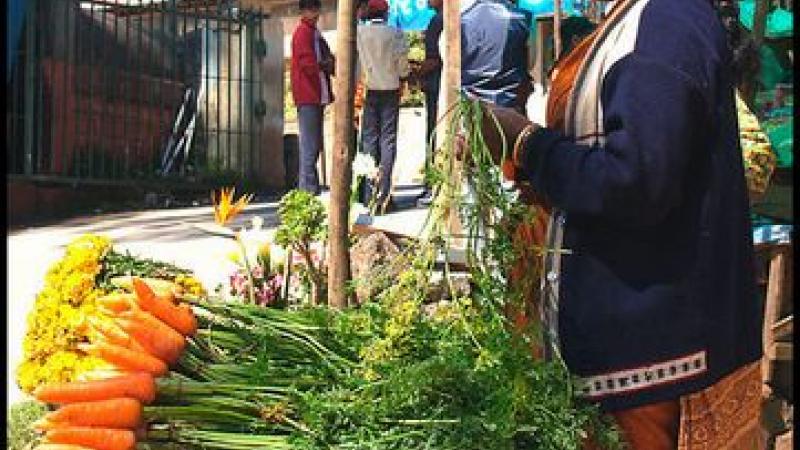
If Guadeloupe's Colombo is a particular brand of curry mixture, then you will be pleased to learn that the Trinidadians have done the same many years ago.
In the nineteenth century we did not attempt to recreate any of the Indian styles of "curry", for the simple reason that it was not possible. The Indians of India can use more than a dozen ingredients to grind their masala, but we in the Caribbean were cut off from the full spice supply. So we improvised and developed a style of curry based on just a few ingredients centred around turmeric, and voila! Trinidad curry.
The Indians made it in their homes, grinding the spices together on the special stones we called sele, sill or other variations.
Since 1956, one of our manufacturers began producing this curry and packaging it as Turban Brand Curry Powder (with a picture of one of the few Sikhs to retain their religion in Trinidad), and later Chief Curry powder from July 1957. These packaged products soon caught the attention of non Indians in Trinidad, and they have been cooking curry dishes ever since. Curry is an accepted national cooking style in Trinidad for all the population and has been so for decades.
So you see, we have been Indianising the population over the decades in the matter of food, too.
It's not just curry cooking.
The Indian style of cooking roti is now the closest we have to a national dish in Trinidad, and Indian style doubles (what the India Indians call channa batura) a well accepted national snack for everybody. Indian cooking staples like aloo (potato) pie, sahina (made from spinach), phulourie (chick peas flour), baiganie (eggplant), channa, dhal, bodi (long beans), sem, caraillie (bitter melon,or paroka in Tamil), loukie (long squash), curry mango, channa and curried chickpeas and potato, and numerous others have come to dominate food styles in Trinidad.
The blacks and other groups who used to laugh at our food tastes in the fifties and sixties of the last century have eventually turned right around and are chomping down Indian style cooking and food as if there is no tomorrow. One result of this is the decimation of what used to be a distinctly creole style of cooking in restaurants and food shops, and also in black homes.
Fifty years or so ago, every street corner in Port of Spain or San Fernando would have vendors selling black pudding, souse (pork bits), bread and shark, crab back, paimee, stewed meat and rice, pone (from cassava), ham, and several others. Now most of these are history, except for bread and shark. Today, Indian food has overtaken them, together with American style fast food, pizza, hamburgers and the like.
Some traditional black cooking still remains in the homes, with staples like callalloo, stews, cookups with meat and rice (yes, the blacks are eating rice as much as us), stews and the like. But in the retail food sector, creole foods are going extinct. There are Rastafarian food vendors in Port of Spain selling a huge range of ital (vegetarian) foods that are exactly what we used to eat at home.
Indians in Trinidad don't need to claim any food as ours. We've offered it to the country, and it's been accepted by all and sundry.
Ram Jagessar, Mai 2006.